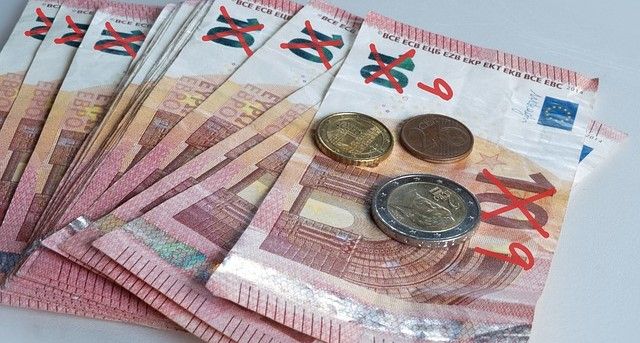The recent announcement by the EU Council that sanctions will be extended until at least the end of July 2023 has fuelled speculation that Europe does not need Russian exports and Russian markets for its economic well-being.
As a whole, the EU economy grew only slightly during the decade following the 2008 financial market crash. The economic situation was then rocked into recession by the COVID pandemic and the impact of Brexit. Russia’s invasion of Ukraine in February 2022 put a further strain on the import of raw materials while also closing markets for European exports.

The sanctions were first introduced in 2014 in response to Russia's earliest political aggression in Ukraine but were significantly expanded following the invasion. They are a range of far-reaching media restraints and economic limits on Russia’s ability to do business with EU nations. Including, “… restrictions on trade, finance, technology and dual-use goods, industry, transport and luxury goods. They also cover: a ban on the import or transfer of seaborne crude oil and certain petroleum products from Russia to the EU, a de-SWIFTing of several Russian banks, and the suspension of the broadcasting activities and licenses of several Kremlin-backed disinformation outlets.”
It was predicted that Russia’s control of many basic raw material supplies for EU manufacturers and particular natural gas supplies during winter, would put the EU economy into a deep depression with high inflation, high unemployment, and weakening public support for support in Ukraine.
However, the recent decision to send battle tanks to Ukraine by a spread of European nations including Germany, the UK, Spain, Poland, and Czechia has shown that Russia’s influence on its economy is not enough to change public support or political will.

For despite all global issues, Germany’s economy for example, grew last year.
As CNN reports, “The country’s GDP rose 1.9% last year, mostly due to a surge in household spending.”
Other economists are even predicting continued growth. Such as Timm Boenke, from the German Institute for Economic Research, who told CNN, “We expect the economic cooldown to be only mild and predict a small, but positive growth rate for the overall year 2023.”
Further proof of Germany’s return to a healthy economic status is evident in data showing that production increased by 0.2% in November 2022, a shock improvement on the 0.4% drop the month before.
The chemical and metallurgy sectors also did better than expected, increasing output by 0.2%, regardless of their previous dependence on cheap energy imports from Siberia.

“The German economy has been more resilient than initially feared,” says Jan-Christopher Scherer from the German Institute for Economic Research. He now expects, “… the country’s GDP to drop slightly in the first three months of 2023 [before] returning to robust growth rates by the end of the year.”
Despite this expected growth, Scherer still predicts inflation to fall some way towards the national bank’s target of 2% by the end of next year. The figure has already started to drop, following the 71-year high of 10.4% in October, calming in December at 8.6%.

However, the mood among business owners is less optimistic, with a recent survey of 2,500 firms conducted by the German Economic Institute showing that a massive 40% of German companies expect business to decline in 2023, with a further 35% believing it will stagnate.
However, much of this economic pessimism may be based on factors not related to Russia.
Instead, the global economy plays a leading role on Germany’s ability to maintain a strong export market. With the International Monetary Fund predicting a third of the world to fall into recession over the next 12 months.

The second, and perhaps main cause of economic uncertainty, is a lack of workers.
“More and more companies are having to cut back on business because they simply can’t find enough staff,” says Stefan Sauer, a labour market expert at the Ifo Institute for Economic Research. “In the medium and long term, this problem is likely to become more severe.”
His predictions are based on data showing that, lacking net immigration, the domestic workforce will drop by 1.5 million people over the next three years.
This will only compound the problem, as a survey carried out by the Ifo in October found that, “nearly 46% of small-to-medium businesses in Germany said their operations were being held back by a lack of skilled workers.”
Germany is in no way alone in this situation, with long-term falling birth rates across Europe causing labour shortages in Spain, Italy, France, and other major economies.

The data does at least mean that Russia’s supposed ‘big weapon’ of cutting off Europe’s gas supply has failed to work. The threat of stopping industry and freezing the population has yet to materialise as EU governments stocked up in advance and the winter turned mild.
While natural gas prices reached an all-time high of €346 per megawatt hour in August 2022 (a ten-fold year-on-year increase from 12 months before), prices have now fallen to €71, the same as prior to Russia’s invasion.
This means that, at least for now, Russia’s restricted raw material supplies and closed markets are not enough to significantly harm European economic health. And it’s likely not enough deter EU political and public support for Ukrainian independence either.
Photo credit: Michael Drummond from Pixabay, David Mark, Bridgesward, Alexandra Koch, David Mark, Media Modifier & Public Domain Pictures